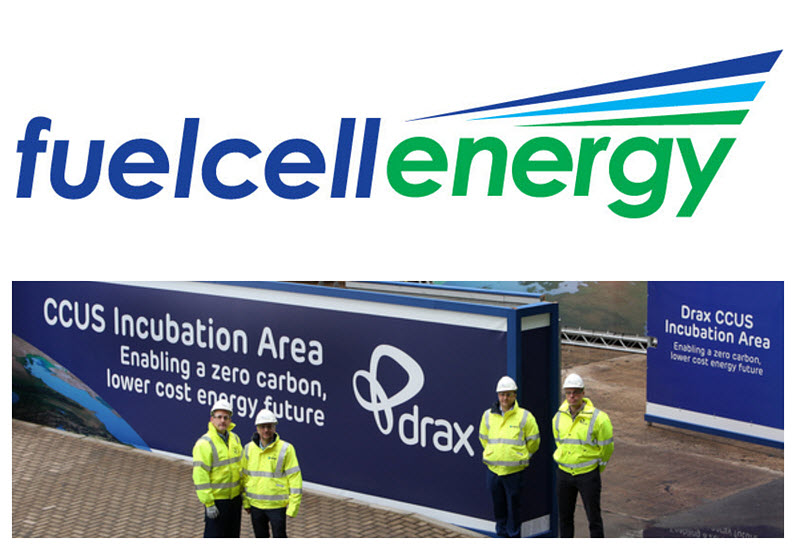A new solar PV or. UNECE said large-scale deployment of CCUS technology in the region would allow countries to decarbonize these sectors thus bridging the gap until next generation carbon energy technologies become.
 5 Carbon Capture And Pre Treatment Unit Operations For A Coal Fired Download Scientific Diagram
5 Carbon Capture And Pre Treatment Unit Operations For A Coal Fired Download Scientific Diagram
CCS can also have a role to play in generating power as most emissions linked to energy infrastructure are already essentially locked-in.

Coal carbon capture. Carbon recapture is a huge and growing interest with two existing large facilities at other coal plants. 75 million in funding to engineer carbon capture projects This funding will support customized engineering designs to install carbon capture and storage technology for power and industrial. Parish coal plant and pipe it 81 miles to the West Ranch oil field where it would push more oil to.
If gas prices rise relative to coal in the future IGCC capture plants could then compete with NGCC capture plants. The lower end of the cost range applies to CO2 capture from the concentrated process stream while the higher end applies to CO2 capture from the more diluted stream coming out of the SMR furnace. Natural gas is always more competitive than coal for both reference and capture plants assuming todays fuel prices remain constant.
The Sidel Carbon Capture Utilization System turns CO2 into good paying full time jobs and money. Coal plants that capture and store 90 of their carbon emissions cost nearly two-thirds more than an equivalent coal plant without CCS to produce the same amount of electricity. The process involves capturing CO2 emissions from coal and gas power plants and from heavy industry for deep underground storage or re-use.
CCUS enables the production of low-carbon hydrogen from fossil fuels a least-cost option in several regions around the world. America has hundreds of years of good quality coal available to produce Americas much needed electricity. Glencore the worlds largest coal exporter is building a pilot carbon capture and storage project in the Surat basin a vast sandstone geological basin in.
Capture from Industrial Sources CO2 capture from industrial facilities such petroleum refineries iron and steel processing plants and ethanol plantsin which CO 2 emissions may be present at a higher concentration than coal-fired power plantsis a vital element in reducing CO 2 emissions. The plant was designed to capture 33 of the carbon emissions from one of four units at the WA. CCUS can remove CO 2 from the atmosphere by combining it with bioenergy or direct air capture to balance emissions that are unavoidable or technically difficult to avoid.
Advocates say carbon recapture is a way to help neutralize coal while we continue to use. Part of NRGs deal with the federal government for running Petra Nova was gaining permission to transport the carbon dioxide scrubbed from burning coal to. Carbon capture and storage CCS is a set of technologies aimed at capturing transporting and storing CO2 emitted from power plants and industrial facilities.
Today carbon capture primarily operates as a kind of carbon trap in coal plants. A coal plant is probably the easiest place to collect carbon. Coal-fired power plants which account for one-third of energy-related CO2 emissions today represent more than a third of cumulative locked-in emissions to 2040Most of these plants are in Asia where average coal plant is just.
The broad cost range reflects varying levels of CO2 concentration. CO2 capture costs for hydrogen refers to production via SMR of natural gas. The goal of CCS is to prevent CO2 from reaching the atmosphere by storing it in suitable underground geological formations.
Supporters say carbon capture would save coal by pumping carbon dioxide a greenhouse gas emitted by power plants underground instead of into the atmosphere. IGCC plants will become more economical than PC plants if carbon sequestration becomes necessary. Carbon Capture and Clean Coal will walk hand in hand.
Carbon capture systems put the clean in clean coal and can cut emissions at industrial sites like ethanol plants or cement factories. They trap carbon dioxide which can then be stored. The amount of coal required for the 1GW power plant without carbon capture technology during its lifetime ranges from 141 10 8 177 10 8 tons with a realistic value of 152 10 8 tons.


